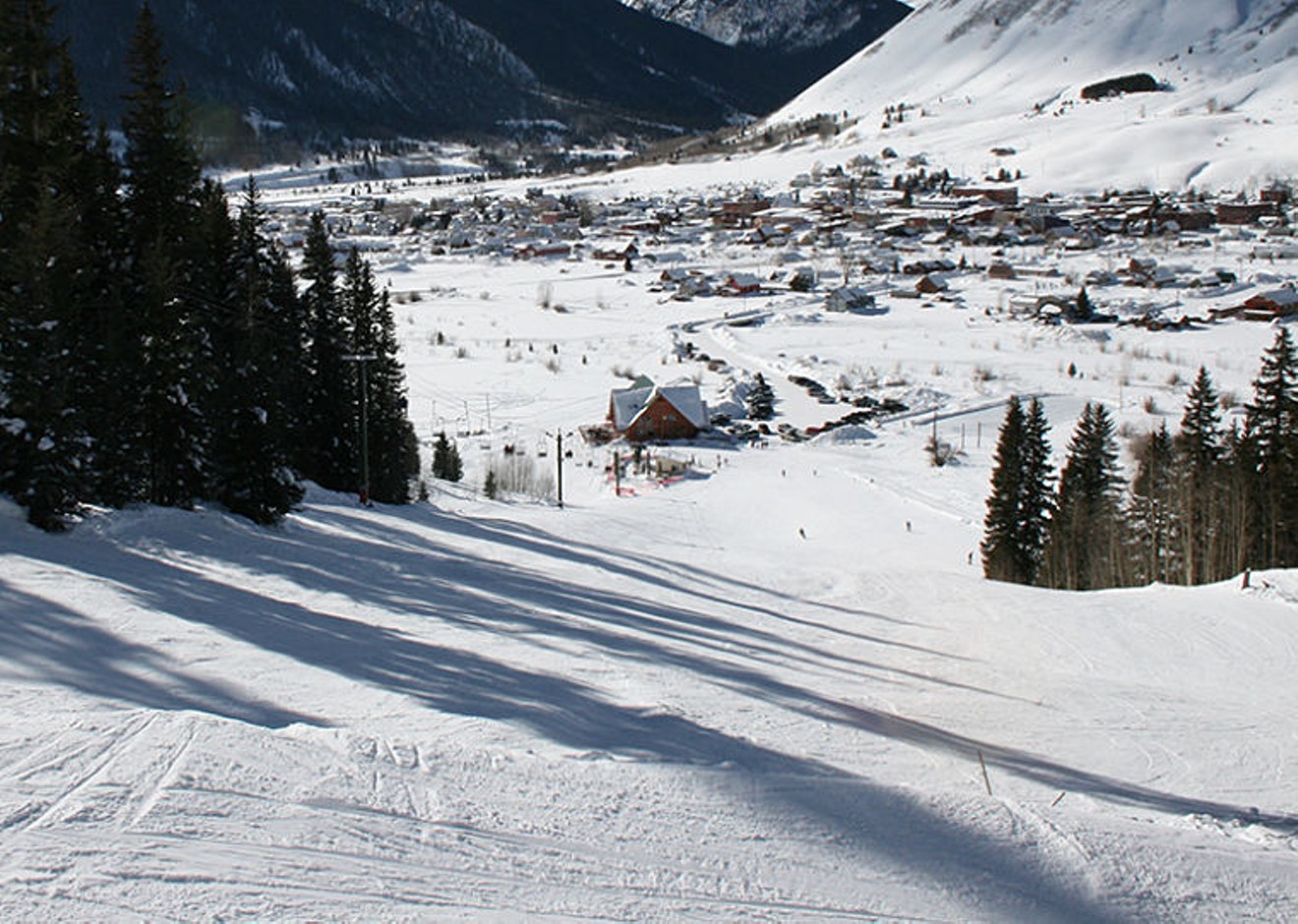Hordes of travelers from around the world will be heading to the hills this week, bound for one of Colorado's ski areas, likely a big mountain with a big international reputation like Aspen, Vail or Breckenridge. But long before skiing became a big business, this state was dotted with small resorts, some private and some public; since Colorado became a state, it's seen close to 200 ski areas open. Today only about thirty remain, most of them members of Colorado Ski Country...and some of them simply small, city-owned spots that hark back to the earliest days of skiing.
Howelsen Hill is owned by Steamboat Springs. It's the oldest ski area in Colorado, dating back to 1915, and is known for its jumps and for producing dozens of Olympians.
Less legendary is Kendall Mountain Ski Area, a 57-year-old facility owned by Silverton that has four groomed trails, multiple tree runs, a terrain park and a double chairlift serving 240 vertical feet. It's open from 11 a.m. to 4 p.m. through January 1; get the rest of the schedule here.
Kendall and Howelsen Hill aren't the only ski areas owned by a municipality. Winter Park is the big one; it was opened by the City of Denver before World War II, and remains a Denver property, though it's run under a long-term operating contract by Alterra Mountain Company, the entity started by Aspen Skiing Co. and Denver’s KSL Capital Partners that owns a dozen resorts.
Unlike Winter Park, though, most ski areas that are owned by municipalities lie in the actual municipality, usually a small town that wanted to provide an amenity for its own residents. But tourists sometimes hit the slopes, too, especially tourists who want bragging rights to having skied at every area in Colorado, no matter its size.
On the (much, much) smaller end of the scale is Lee's Ski Hill, and this area owned by the City of Ouray isn't much of a hill at all. The vertical drop is just 75 feet, and a single rope tow serves the single beginner slope. But Lee's isn't intended to be a major draw; it's a spot where local children can learn the sport of skiing. It operates from noon to dusk weekends and holidays, and after school on weekdays. Lee's isn't on the Colorado Ski Country roster; it isn't even on its radar.
Durango also has a city-owned ski area, Chapman Hill. It's part of a complex that includes skating and other recreational activities, and has a vertical drop of 775 feet and two rope tows. "This is where skiing started in the Southwest," says Durango's Matt Morrissey. And when the area did start in the early ’50s, it did so with a rope tow that had been used by the 10th Mountain Division in WWII.
Cranor Hill was constructed in 1962 as a private ski ranch; after operating for four years, it was sold to the City of Gunnison under the stipulation that it would continue to be operated as a ski area. And it still is, snow willing. A single poma lift services four runs.
Lake City Ski Hill has had a rocky history for decades. It got its start in 1966, when the tiny town's chamber of commerce purchased a poma lift from Arapahoe Basin. Lake City ran the hill until a couple of bad snow years closed it in the early ’80s; it reopened in 1998 after former Governor Roy Romer was able to connect the town with mechanics willing to upgrade the lift, according to coloradoskihistory.com. But it, too, is often bedeviled by a snow shortage.
[
{
"name": "Air - MediumRectangle - Inline Content - Mobile Display Size",
"component": "12017618",
"insertPoint": "2",
"requiredCountToDisplay": "2"
},{
"name": "Editor Picks",
"component": "17242653",
"insertPoint": "4",
"requiredCountToDisplay": "1"
},{
"name": "Inline Links",
"component": "18838239",
"insertPoint": "8th",
"startingPoint": 8,
"requiredCountToDisplay": "7",
"maxInsertions": 25
},{
"name": "Air - MediumRectangle - Combo - Inline Content",
"component": "17261320",
"insertPoint": "8th",
"startingPoint": 8,
"requiredCountToDisplay": "7",
"maxInsertions": 25
},{
"name": "Inline Links",
"component": "18838239",
"insertPoint": "8th",
"startingPoint": 12,
"requiredCountToDisplay": "11",
"maxInsertions": 25
},{
"name": "Air - Leaderboard Tower - Combo - Inline Content",
"component": "17261321",
"insertPoint": "8th",
"startingPoint": 12,
"requiredCountToDisplay": "11",
"maxInsertions": 25
}
]













